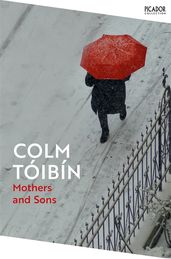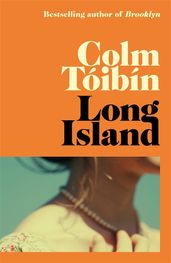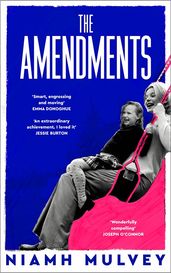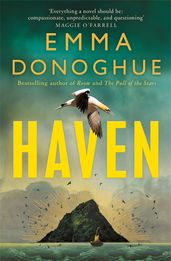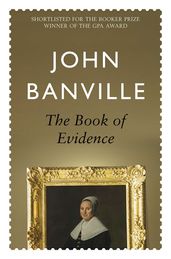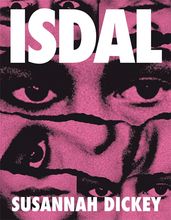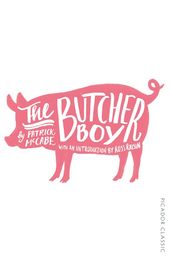10 brilliant books by contemporary Irish novelists
Author Garrett Carr explores whether Irish literature can be a genre, and introduces some exceptional books by Irish writers.

The international reach of Irish literature is striking, given what a small place it is. A comment I saw recently on social media might help explain something of how Irish writing holds its prominent place in the world’s cultural life: a Bookstagrammer said she considers 'Irish literature to be a genre.' I was inclined to reject the idea until I remembered that ‘genre’ is a wide concept, including genres that authors choose to engage with – crime for example – but also genres that authors get organised into. Nineteenth Century Russian, for example. In this light the idea that Irish literature is a genre might be, I admit, valid. And it is an organising idea that I suspect others may hold as well, even if they don’t put it that way. It seems to me that genres form mostly around reader expectation and hold together because the books in the genre mostly fulfil those expectations. This is what keeps the whole show on the road. So, what are readers seeking, expecting, when they choose a book from Ireland? I may not be the best judge, being Irish and very close to the subject, but I’ll try to figure something out with the following list.
‘Readers selecting an Irish novel might be seeking humour and a sense of the ridiculous – a common quality in work from the island. You might also mention wry observation, generous warmth, mischievousness, irreverence – and the spectrum is wider still: a keen sense of the ridiculous can be applied to life’s tragedies and used to communicate them to the reader in an oblique way that actually increases the impact. It seems to me that both comedy and tragedy come from the same place. That’s why a good novel can switch from one to the other in just a couple of beats. Thirst Trap contains the whole spectrum of what we might mean by witty writing, from light to dark, from bitter to sweet, often on the same page.’
Thirst Trap
by Gráinne O'Hare
Maggie, Harley and Róise are friends on the brink: of triumph, catastrophe, or maybe just finally growing up. Their crumbling Belfast house share has been witness to their roaring twenties, but now fault-lines are beginning to show. The three girls are still grieving the tragic death of their friend, Lydia, whose room remains untouched. Their last big fight hangs heavy over their heads, unspoken since the accident. And now they are all beginning to unravel.
‘Louise Hegarty's debut, too, offers wit in abundance: in the overall plan, the measured execution and also sentence-by-sentence. Fair Play does indeed play, working with the detective genre in a way that is several steps beyond even the self-awareness displayed in the 2019 film Knives Out. But this box of tricks also delivers truths around pain and loss than are all the stronger for the clever design.’
Fair Play
by Louise Hegarty
Two competing stories – and genres – combine to peel back the nature of grief in this startlingly original debut novel. When Benjamin dies at his own birthday party, Abigail's world is quite literally split in two. On one side, she attempts to grasp the reality of her brother's death, while on the other everything is not quite what it seems: an eminent detective has arrived to track down the murderer, and there's suddenly a butler, a gardener and a locked-room mystery where everyone is a suspect.
‘Families are often central in books by Ireland’s writers. Irish characters tend to exist in a familial web and family is often, at least partly, what an Irish novel is about. If Crime and Punishment was Irish, Raskolnikov would be living at home, an interfering sibling would shop him to the police while his put-upon mammy would try to talk him out of confessing. Tóibín’s Mothers and Sons focuses in on the familial relationship of the title: a relationship that can be dark when it's distant but even darker when it’s close.’
Mothers and Sons
by Colm Tóibín
This collection of short stories by one of the great prose stylists of our time focuses on moments in which unspoken balances shift; moments of disagreement and crisis which tease out the intricate and fragile details of relationships between mothers and their sons.
‘Sticking with Tóibín, Long Island also shows what a gifted observer of families this author is. In Long Island a fine weave of noticing supports a compelling story.’
Long Island
by Colm Tóibín
What actually happened when Eilis returned to New York? Long Island is the long-awaited sequel to Colm Tóibín's prize-winning, bestselling novel Brooklyn. Eilis and Tony have built a secure, happy life; twenty years married and with two children looking towards a good future. But then a man with an Irish accent knocks on their door, and everything changes. Did Eilis make the wrong choice marrying Tony all those years ago? Is it too late now to take a different path?
‘The web of family extends outwards until it is community, society and finally country. In Ireland it is via the family, our parents for example, that national attitudes and societal pressures are applied to us. You’re not safe from them at home: that’s exactly where they get you. Many of us left home as the first step to escaping them. The Amendments takes this enlarged space, the family-community-country continuum, and also uses an expansive timeframe, visiting three generations along a family’s matrilineal line. It is a vivid and deeply involving novel about change, both in individuals and across an entire society. Mulvey's characters are living through what are in fact revolutions, although they don’t always realise it.’
The Amendments
by Niamh Mulvey
For Nell and Adrienne, the prospect of becoming parents is bittersweet. Adrienne is excited about the start of their new life, whereas, for Nell, their impending parenthood takes her back to a past she has long tried to bury, to finally confront her fractured relationship with her mother. A story of love, freedom, belonging and rebellion told through the stories of three generations of women from the same Irish family.
‘When meeting a tourist most Irish people, including me, deputise ourselves to the National Tourism Development Authority, and start giving advice and suggestions of where to visit. Over the years I have advised dozens of people that Ireland’s number one sight is Skellig Michael, a tall rocky island and former monastic settlement off the south-west coast. For Haven, Emma Donoghue imagines the first monks to establish a colony there, in the seventh century, just as Christianity was taking hold in Ireland. This is a very original angle on the place of religion in Irish society. She brings a strange world to life in a story that is partly an adventure, but also a gripping story of cruelty and fundamentalism.’
Haven
by Emma Donoghue
In seventh-century Ireland, monks Trian and Cormac are led out to sea by Artt, a scholar and priest, told in a dream to leave the sinful world behind. Travelling into the Atlantic, they land at an isolated crag now known as Skellig Michael: remote, exposed, home to nothing but tens of thousands of birds. Intending to establish a monastery, they claim it for God. But can three men so detached from the rest of humanity, retain theirs? When you’re so far from others, is it possible to remain close to each other, and to God?
‘Above, I wondered what an Irish Crime and Punishment might look like, but there was no need as we already have one. It’s called The Book of Evidence and it’s brilliant. The novel is the story of a murder, its lead up and fallout. In this novel are found perfect examples of what I think of as Banville’s signature move: a long paragraph, sometimes a page or more, that moves as one, with steady intent, until, right on the final word, some delicate, unconsidered aspect of life has been caught perfectly, framed and displayed, like a butterfly pinned inside a glass case. The novel was shortlisted for the Booker Prize in 1989.’
The Book of Evidence
by John Banville
Freddie Montgomery has committed two crimes. He stole a small Dutch master – an unattributed painting of a middle-aged woman – from a wealthy family friend. And he murdered a chambermaid who caught him in the act, bludgeoning her to death with a hammer. An eccentric narcissist, he has little to say about the woman he killed. He travels through life without any apparent remorse. He killed her, he says, because he was physically capable of it. It made sense to him. However, as he narrates his testimony, there is one thing he cannot understand. One thing he would desperately like to know. Why did he want to steal the painting?
‘Here too, in acclaimed novelist Susannah Dickey's debut poetry collection, is a corpse, but a lack of evidence. We’re not even sure it’s a murder. Dickey’s starting point is the true case of the ‘Isdal Woman’, whose burnt body was found in a Norwegian valley in 1970. The collection’s tripart structure moves from poetry to philosophical micro-essays and back again. In tone it goes from satire to something more personal and pained. Any notion of an Irish genre falters here, the work is media-savvy and youthful, giving it a transnational air. ISDAL is ambitious, challenging and highly original.’
ISDAL
by Susannah Dickey
Susannah Dickey explores our cultural obsession with true crime. The book is split into three parts: the first follows the flirty co-presenters of a podcast about the mystery of 'Isdal Woman', the second a philosophical enquiry into our perennial obsession with female victims, sexiness, and death and finally free verse poems that both explore and – perhaps inevitably – enact the ethical ambiguities of the genre. Witty, excoriating and formally ingenious.
‘In this 1992 novel we also see an Irish duality of comedy and tragedy, set in play through the internal and external worlds of troubled young man Francie Brady. Other familiar features of Irish literature are present, such as family and community, yet The Butcher Boy does something shockingly new with these ingredients. It barrels along with a comic book’s fervency and surely one of the most compelling narrative voices ever created. I think the novel’s originality still cuts through, despite how influential it has been. Irish writing simply couldn’t stay the same after The Butcher Boy landed. It is a modern classic.’
The Butcher Boy
by Patrick McCabe
Francie Brady is a small-town rascal who spends his days turning a blind eye to the troubles at home and getting up to mischief with his best friend Joe – hiding in the chicken-house, shouting abuse at fish in the local stream. But after a disagreement with his neighbour Mrs Nugent over her son's missing comic books, Francie's reckless streak spirals out of control and gives rise to a monstrous obsession . . .
Garrett Carr's debut novel is out now
The Boy from the Sea
by Garrett Carr
Garrett Carr's debut takes us to Ireland's west coat in the 1970s, where a baby is found alone on the beach. Adopted by fisherman Ambrose Bonnar, the boy captivates Bonnar's family and the close-knit town immediately, through love, worry and envy. Set over twenty years, this is a tale of ordinary lives made extraordinary, and a quiet community attempting to adapt in a fast-changing world.


